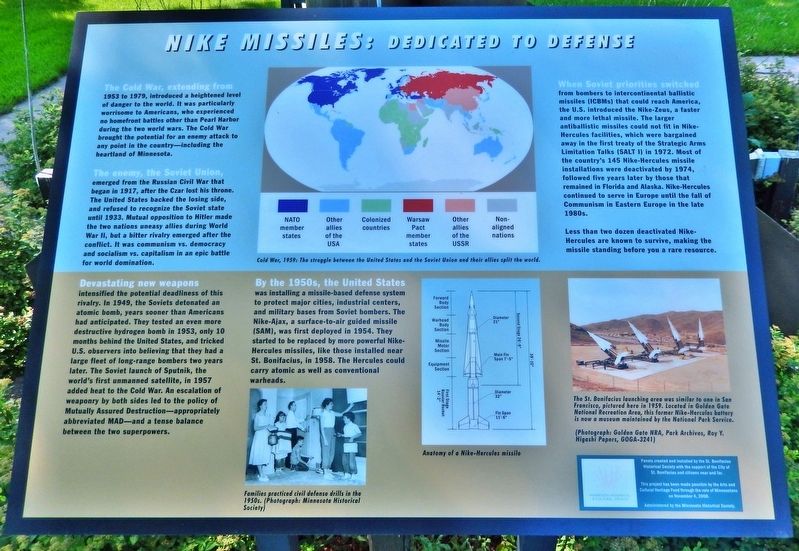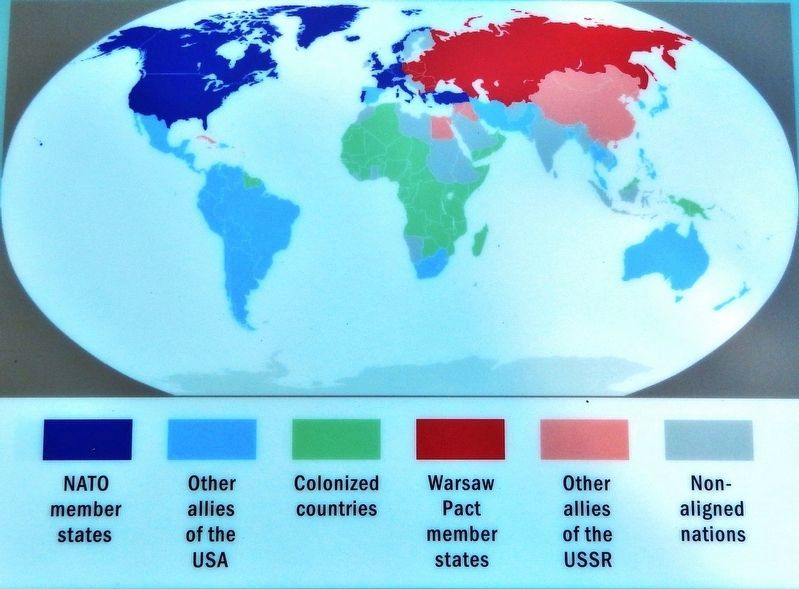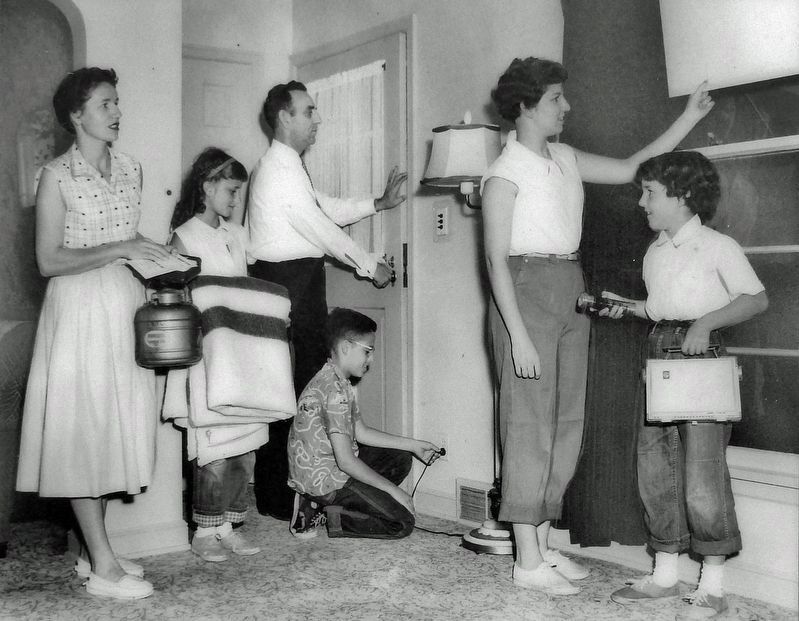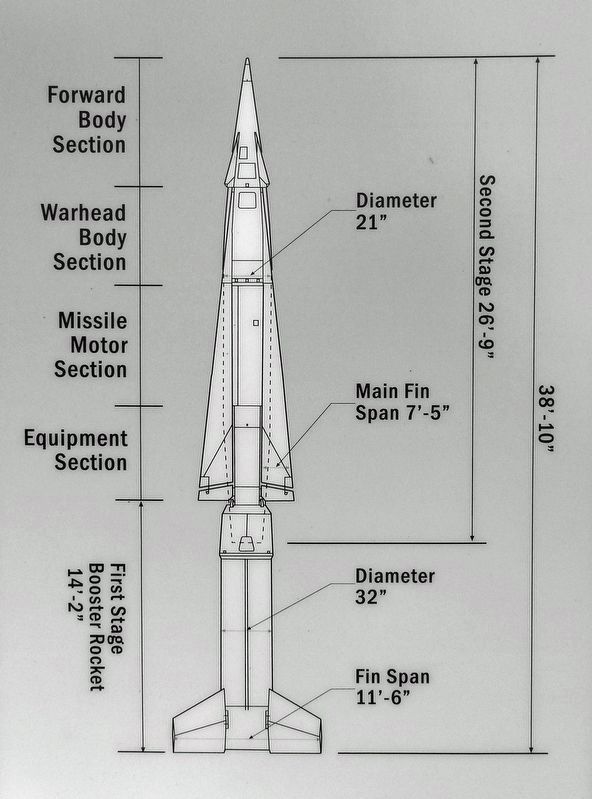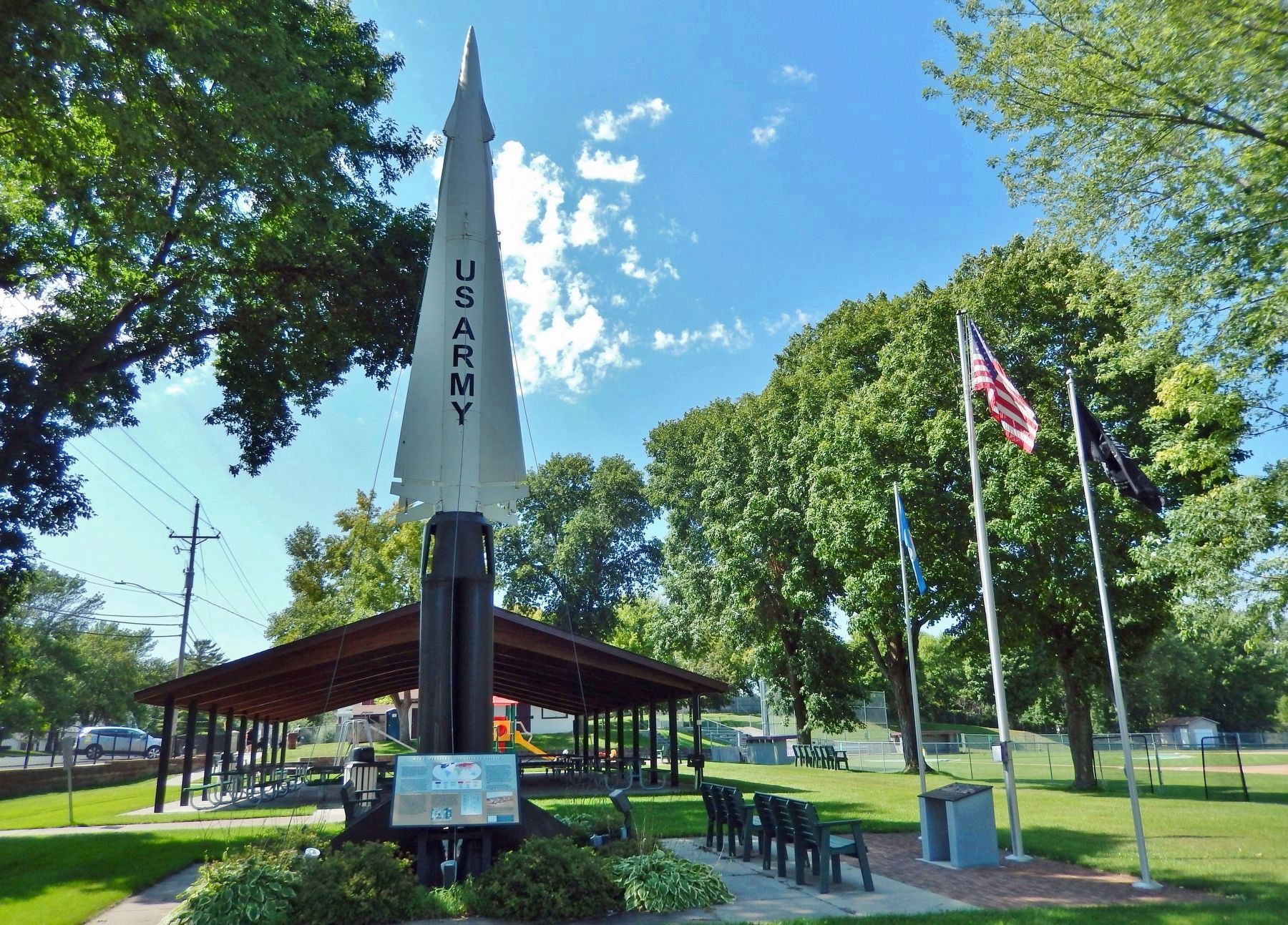Saint Bonifacius in Hennepin County, Minnesota — The American Midwest (Upper Plains)
Nike Missiles: Dedicated to Defense
The Cold War, extending from
1953 to 1979, introduced a heightened level of danger to the world. It was particularly worrisome to Americans, who experienced no homefront battles other than Pearl Harbor during the two world wars. The Cold War brought the potential for an enemy attack to any point in the country — including the heartland of Minnesota.
The enemy, the Soviet Union,
emerged from the Russian Civil War that began in 1917, after the Czar lost his throne. The United States backed the losing side, and refused to recognize the Soviet state until 1933. Mutual opposition to Hitler made the two nations uneasy allies during World War II, but a bitter rivalry emerged after the conflict. It was communism vs. democracy and socialism vs. capitalism in an epic battle for world domination.
When Soviet priorities switched
from bombers to intercontinental ballistic missiles (ICBMs) that could reach America, the U.S. introduced the Nike-Zeus, a faster and more lethal missile. The larger antiballistic missiles could not fit in Nike-Hercules facilities, which were bargained away in the first treaty of the Strategic Arms Limitation Talks (SALT I) in 1972. Most of the country's 145 Nike-Hercules missile installations were deactivated by 1974, followed five years later by those that remained in Florida and Alaska. Nike-Hercules continued to serve in Europe until the fall of Communism in Eastern Europe in the late 1980s.
Less than two dozen deactivated Nike-Hercules are known to survive, making the missile standing before you a rare resource.
Devastating new weapons
intensified the potential deadliness of this rivalry. In 1949, the Soviets detonated an atomic bomb, years sooner than Americans had anticipated. They tested an even more destructive hydrogen bomb in 1953, only 10 months behind the United States, and tricked U.S. observers into believing that they had a large fleet of long-range bombers two years later. The Soviet launch of Sputnik, the world's first unmanned satellite, in 1957 added heat to the Cold War. An escalation of weaponry by both sides led to the policy of Mutually Assured Destruction — appropriately abbreviated MAD — and a tense balance between the two superpowers.
By the 1950s, the United States
was installing a missile-based defense system to protect major cities, industrial centers, and military bases from Soviet bombers. The Nike-Ajax, a surface-to-air guided missile (SAM), was first deployed in 1954. They started to be replaced by more powerful Nike-Hercules missiles, like those installed near St. Bonifacius, in 1958. The Hercules could carry atomic as well as conventional warheads.
created and installed by the St. Bonifacius Historical Society with the support of the City of St. Bonifacius and citizens near and far.
This project has been made possible by the Arts and Cultural Heritage Fund through the vote of Minnesotans on November 4, 2008.
Administered by the Minnesota Historical Society.
Erected 2010 by St. Bonifacius Historical Society; and City of St. Bonifacius.
Topics. This historical marker is listed in these topic lists: Air & Space • War, Cold. A significant historical year for this entry is 1953.
Location. 44° 54.35′ N, 93° 44.86′ W. Marker is in Saint Bonifacius, Minnesota, in Hennepin County. Marker can be reached from Wildwood Avenue just west of Main Street (County Road 92), on the right when traveling west. Marker is located near the southeast corner of Missile Park, on the east side of the Nike Hercules Missile exhibit. Touch for map. Marker is at or near this postal address: 8822 Wildwood Avenue, Saint Bonifacius MN 55375, United States of America. Touch for directions.
Other nearby markers. At least 8 other markers are within 5 miles of this marker, measured as the crow flies. St. Bonifacius: A Cold War Battlefront (here, next to this marker); In Memory of All American Veterans (here, next to this marker); "Golden Buckle of the Dairy Belt" (approx. 2.1 miles away); Clearing the Land, Making a Home (approx. 2.1 miles away); Grimm Farm Historic Site (approx. 2.1 miles away); Commemorating Wendelin Grimm (approx. 2.1 miles away); Minnetonka -- Queen of the Inland Lakes (approx. 4.1 miles away); SurfSide Park (approx. 4.1 miles away). Touch for a list and map of all markers in Saint Bonifacius.
Regarding Nike Missiles: Dedicated to Defense.
From Star Tribune, by Tom Meersman, 9/4/2013:
For 14 years, they were the last resort for protecting the Twin Cities in case of a Soviet air attack. With 15 minutes’ warning, Nike Hercules missiles could be raised from bunkers, moved to launchpads and aimed to shoot down enemy bombers before they reached the metro area. The St. Bonifacius site, on farmland about 25 miles from Minneapolis, was chosen because it’s one of the highest points in Hennepin County. It contained missiles stored horizontally underground, three large radar units above ground and an administrative building. The missiles were for defensive purposes only and had a range of about 90 miles. They used the most advanced technology of their time, with missile-tracking radar that allowed the Hercules fins to be adjusted electronically during
flight to home in on evasive aircraft.
Related markers. Click here for a list of markers that are related to this marker.
Also see . . . St. Boni Nike-Hercules Missile Project.
St. Bonifacius is the only town in Minnesota with a real Nike-Hercules missile in its park, commemorating the nearby missile base that stood from 1959 to 1974. This is a rare display; as only 15-20 missiles still exist from the thousands placed around 20 U.S. cities during the Cold War. The project designed and manufactured two outdoor interpretive panels to tell the story of this missile and missile base within the larger context of the Cold War, a chapter in U.S. History increasingly invisible to younger people. The effort grew out of a conversation about the creation of a memorial to all local soldiers from all U.S. conflicts by local civic and veterans groups.(Submitted on November 23, 2022, by Cosmos Mariner of Cape Canaveral, Florida.)
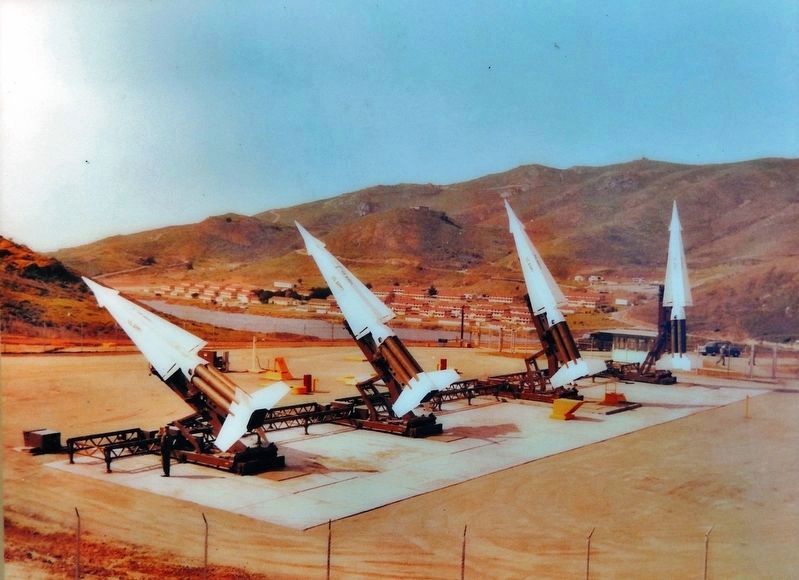
Golden Gate NRA, Park Archives, Roy Y. Higashi Papers, GOGA-3241
5. Marker detail: Nike-Hercules Battery (1959)
The St. Bonifacius launching area was similar to one in San Francisco, pictured here in 1959. Located in Golden Gate National Recreation Area, this former Nike-Hercules battery is now a museum maintained by the National Park Service.
Credits. This page was last revised on November 23, 2022. It was originally submitted on November 23, 2022, by Cosmos Mariner of Cape Canaveral, Florida. This page has been viewed 326 times since then and 94 times this year. Photos: 1, 2, 3, 4, 5, 6. submitted on November 23, 2022, by Cosmos Mariner of Cape Canaveral, Florida.
